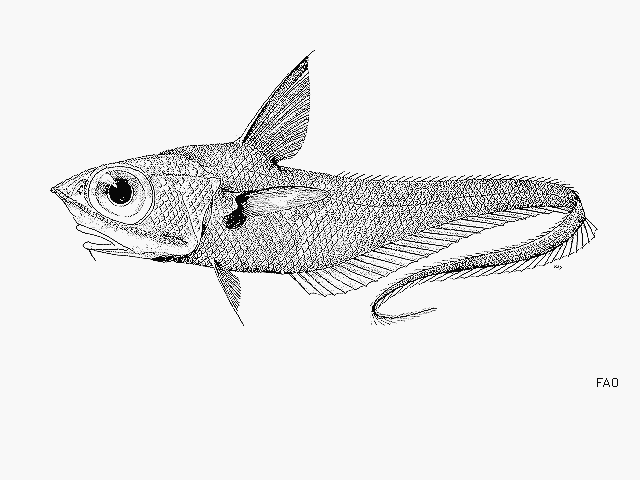| Macrouridae (Grenadiers or rattails), subfamily: Macrourinae |
| 39 cm TL (male/unsexed) |
|
benthopelagic; depth range 119 - 450 m, non-migratory |
| Southeast Pacific and Southwest Atlantic: Chile (up to 41°S) and Argentine Patagonia. |
|
Dorsal spines (total): 0-0; Anal spines: 0-0. Head large; eyes large; snout short and bluntly pointed. Body elongated, tapering abruptly from the first dorsal-fin base. Light organ rather short, extending in front of the anus within the body wall as a flattened, elongate diverticulum falling well short of the pelvic fin bases. Scales rather large and deciduous. Color is brownish to swarthy; the trunk bluish to violet; the fins dusky to blackish. A prominent blackish area behind the pectoral fin bases. The mouth and gill cavities pale. |
| Feeds on copepods, pagurid and brachyurid crabs, and shrimp-like crustaceans. |
|
Not Evaluated
(Ref. 96402)
|
| harmless |
|
Source and more info: www.fishbase.org. For personal, classroom, and other internal use only. Not for publication.
Page created by Jen, 05.08.02,
php script by kbanasihan 06/09/2010 ,
last modified by
dsantos, 20/08/10

